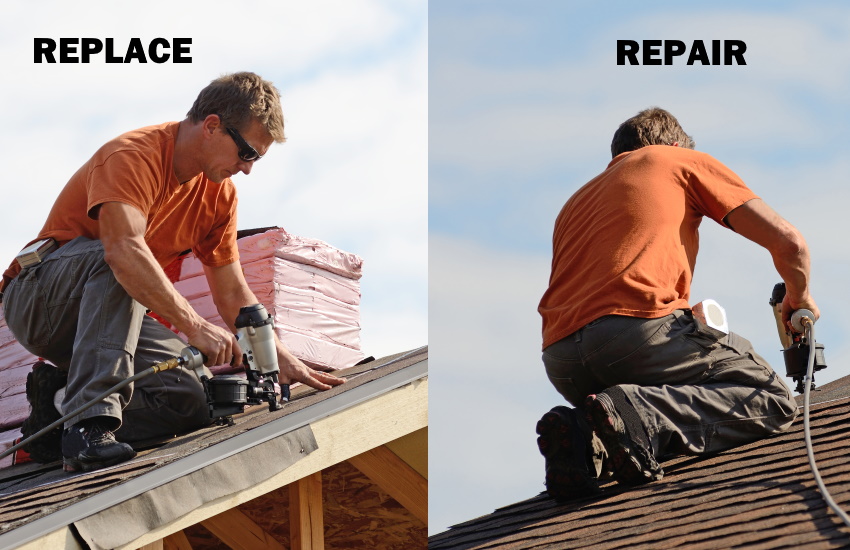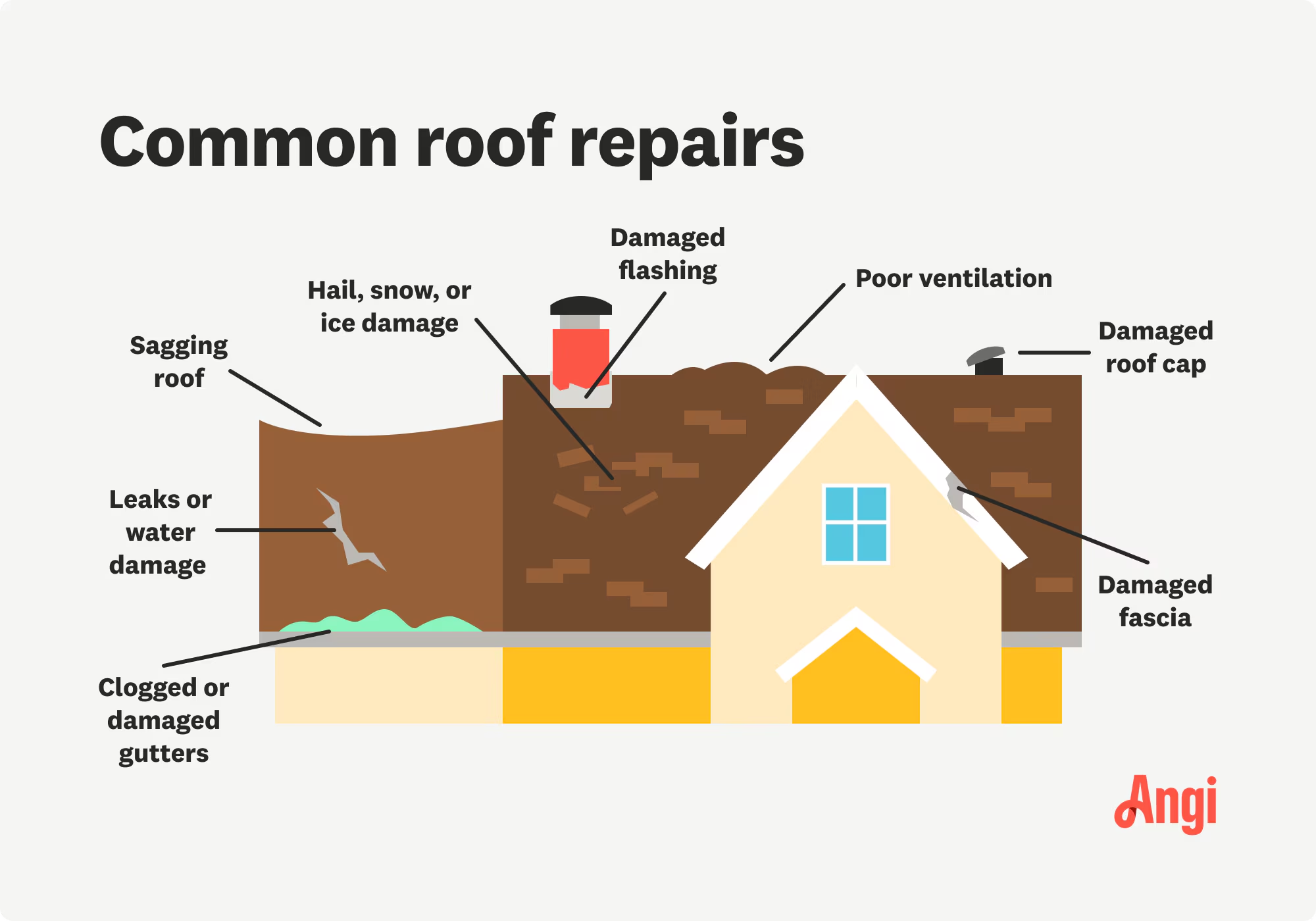Recognizing the Different Types of Roof Coverings: A Comprehensive Overview for Homeowners
In the realm of homeownership, picking the ideal roof covering style is a choice that lugs significant ramifications for both capability and visual appeal. With a range of options-- varying from the conventional gable to the modern level-- each kind presents distinct advantages and challenges that must line up with the house owner's ecological factors to consider and particular needs. Understanding these differences not only help in making an enlightened selection yet additionally affects long-lasting maintenance and power efficiency. As we explore the intricacies of different roofing types, it comes to be noticeable that one size does not fit all; the best selection might stun you.
Saddleback Roof
Gable roofs, defined by their triangular form, are amongst one of the most preferred roofing styles as a result of their simplicity and efficiency in dropping water and snow. This layout includes two sloping sides that meet at a ridge, allowing for effective drain and minimizing the threat of water buildup. The steep pitch generally related to gable roofings boosts their capability to handle hefty precipitation, making them suitable for numerous environments.
In addition to their sensible advantages, gable roofings offer visual versatility. They can be adjusted to numerous building designs, from standard to modern-day homes. The layout can additionally fit additional features such as dormer home windows, which improve natural light and air flow in the attic space.
Moreover, gable roofs provide enough room for insulation, contributing to power effectiveness. House owners can select from a variety of roofing materials, including asphalt shingles, steel, and tiles, even more improving personalization options.
Despite their advantages, gable roof coverings may call for extra assistance in locations prone to high winds or hefty snowfall. In general, the gable roofing system stays a favored choice because of its blend of functionality, resilience, and aesthetic allure.
Flat Roofs
Flat roofings are frequently acknowledged for their minimal style and useful applications, specifically in commercial and industrial settings (oahu roofing). These roofings feature a straight or nearly straight surface, which permits very easy construction and versatile area use. While they may lack the visual charm of angled roofs, level roofs supply various advantages, especially in metropolitan environments where making the most of space is essential
One of the primary advantages of flat roofing systems is their accessibility. Property owners can utilize the roof area for numerous objectives, such as rooftop gardens, balconies, or photovoltaic panel installations. Additionally, flat roofings are usually extra economical to preserve and set up compared to their sloped equivalents, as they require less products and labor.
Common products used for flat roofing systems include built-up roofing (BUR), changed asphalt, and single-ply membrane layers, each offering distinctive benefits. In general, flat roof coverings serve as a functional and adaptable selection for many property owners and services alike.
Hip Roofings
Hip roof coverings are characterized by their sloped sides that converge at the top, forming a ridge. This style is distinctive from saddleback roofs, as all 4 sides of a hip roof incline downwards toward the wall surfaces, offering a much more steady structure. The angle of the inclines can vary, enabling adaptability in architectural visual appeals and functionality.
Among the primary benefits of hip roofing systems is their capability to withstand heavy winds and negative climate condition. The sloped surface areas allow much better water drain, decreasing the risk of leakages and water damages. Additionally, hip roof coverings provide increased attic room, which can be utilized for storage or perhaps exchanged livable locations.
However, building a hip roof covering can be much more expensive and intricate than simpler roofing system types, such as gable roofs. The additional product and labor associated with producing the slopes and making certain correct architectural integrity can lead to greater costs. In spite of these downsides, several house owners prefer hip roofing systems for their durability, visual appeal, and capacity for power efficiency.
Mansard Roofings
Mansard roofings, usually recognized by their special four-sided style, function 2 inclines on each side, with the lower slope being steeper than the top. This building design, stemming from France in the 17th century, is not just cosmetically enticing however useful, as it makes the most of the usable space in the top floors of a building. The steep lower slope allows for more clearance, making it a suitable option for attic rooms or lofts, which can be exchanged living areas.
Mansard roofings are characterized by their adaptability, fitting different architectural designs, from traditional to modern-day. They can be created with different products, consisting of asphalt this contact form roof shingles, slate, or steel, providing property owners with a series of options to fit their spending plans and choices. Furthermore, the style permits the assimilation of dormer home windows, improving all-natural light and ventilation in the top levels.
However, it is vital to consider the possible drawbacks. Mansard roofing systems might require more upkeep due to the intricacy of their design, and their steep slopes can be testing for snow and rain runoff. On the whole, mansard roofing systems incorporate sophistication with practicality, making them a popular option amongst property owners looking for distinct building attributes.
Lost Roofings
As homeowners increasingly find out seek simplicity and performance in their building designs, shed roofing systems have become a preferred choice. Identified by a solitary sloping plane, a shed roofing system provides a minimalist aesthetic that complements various home designs, from modern to rustic.
One of the main benefits of a shed roof is its simple construction, which frequently equates to lower labor and product costs. This style enables effective water drain, decreasing the danger of leaks and water damage. Additionally, the upright slope gives enough space for skylights, boosting all-natural light within the interior.
Shed roof coverings additionally use adaptability in terms of use. They can be efficiently incorporated right into additions, garages, or outdoor structures like structures and sheds. Moreover, this roofing style can fit various roof products, including metal, asphalt tiles, or also eco-friendly roofs, lining up with environment-friendly campaigns.
Nevertheless, it is vital to take into consideration local climate problems, as hefty snow lots might require adjustments to the roof covering's angle or structure. Generally, dropped roofs provide a functional and visually pleasing alternative for house owners seeking to optimize functionality without endangering design.
Final Thought


Gable roofs, identified by their triangular shape, are amongst the most preferred roofing styles due to their simpleness and effectiveness in dropping water and snow. oahu roofing. The steep pitch typically linked with gable roof coverings boosts their capability to take care of heavy precipitation, making them suitable for different climates
While they might do not have the aesthetic appeal of pitched roofing systems, flat roofings offer countless advantages, especially in metropolitan environments where taking full advantage of space is crucial.
